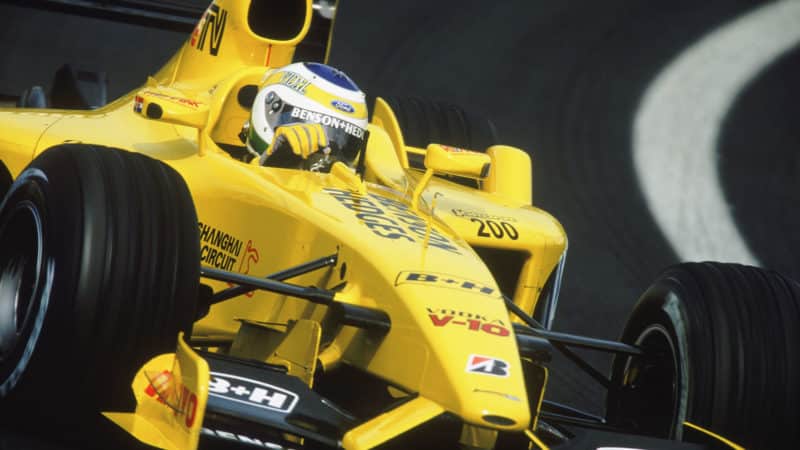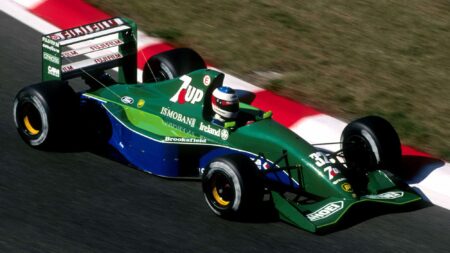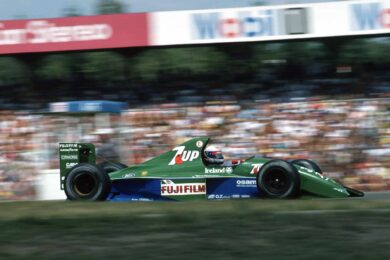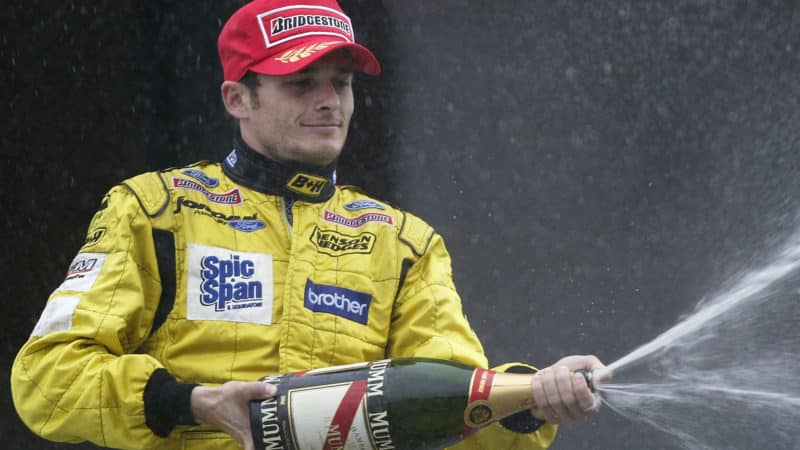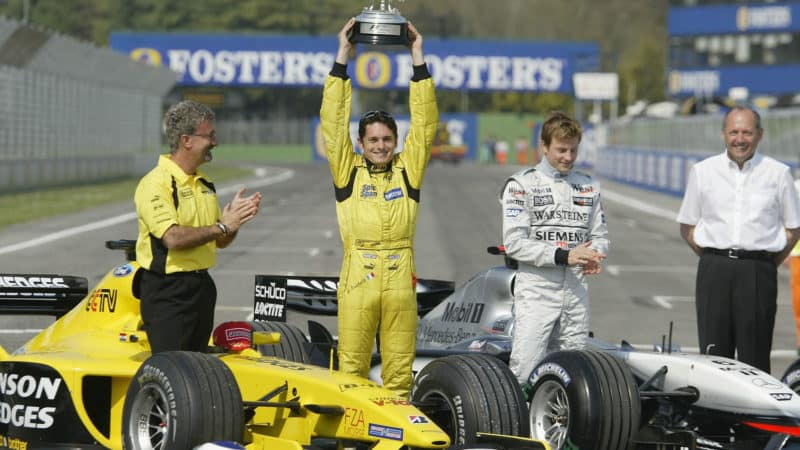Then, as so often was the case in Jordan history, an opportunity presented itself.
Just three races into the 2003 season, and yet again the team had already experienced all the highs and lows that come with life in F1: almost foundering on the rocks of financial disaster, then winning a grand prix.
“That was a very tough year,” Jordan remembers. “We were really suffering because it was coming to the end of the Benson and Hedges era, the end of tobacco for us.
“I realised that without a very major corporate sponsor, things were very difficult.
“Ken Tyrrell was no longer there, Frank Williams was not as strong as he used to be.”
Jordan had suffered the double blow of losing title sponsors DHL, then engine supplier Honda deciding to move its works operation over to BAR for 2003 – leaving the Silverstone team using customer Cosworth units.
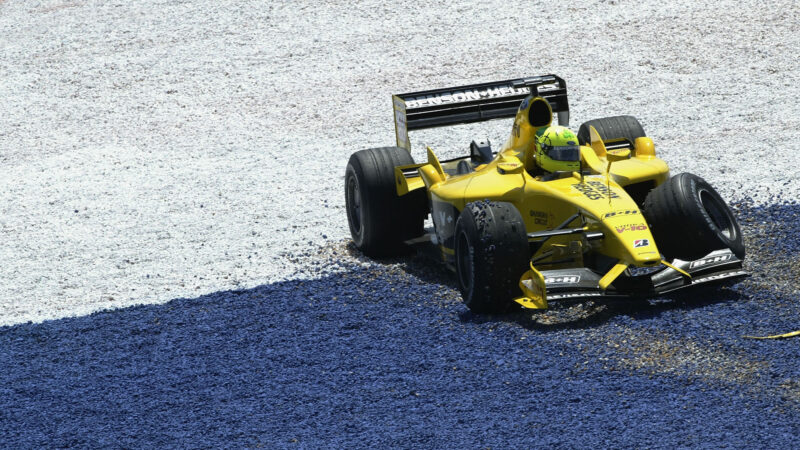
Two races and no points finishes for Jordan prior to Interlagos
Getty Images
“The price Ford made us pay for the engines were astronomical, so clearly I wasn’t overjoyed with them,” he says.
“I could see the writing on the wall that it was going to be really difficult to survive.”
Jordan had salvaged sixth in the constructors’ championship in 2002, but the lack of funds and an underdeveloped car in the EJ13 meant that it started again on the back foot in 2003.
The little team was not without serious talent though – technical director Gary Anderson rejoined in 2002, Rob Smedley, who would shortly move to Ferrari, was Fisichella’s race engineer and the car’s aerodynamics had been shaped by Henri Dumand, fundamental in designing the sleek McLaren MP4/8 in which Ayrton Senna took five wins in his final year at Woking.
